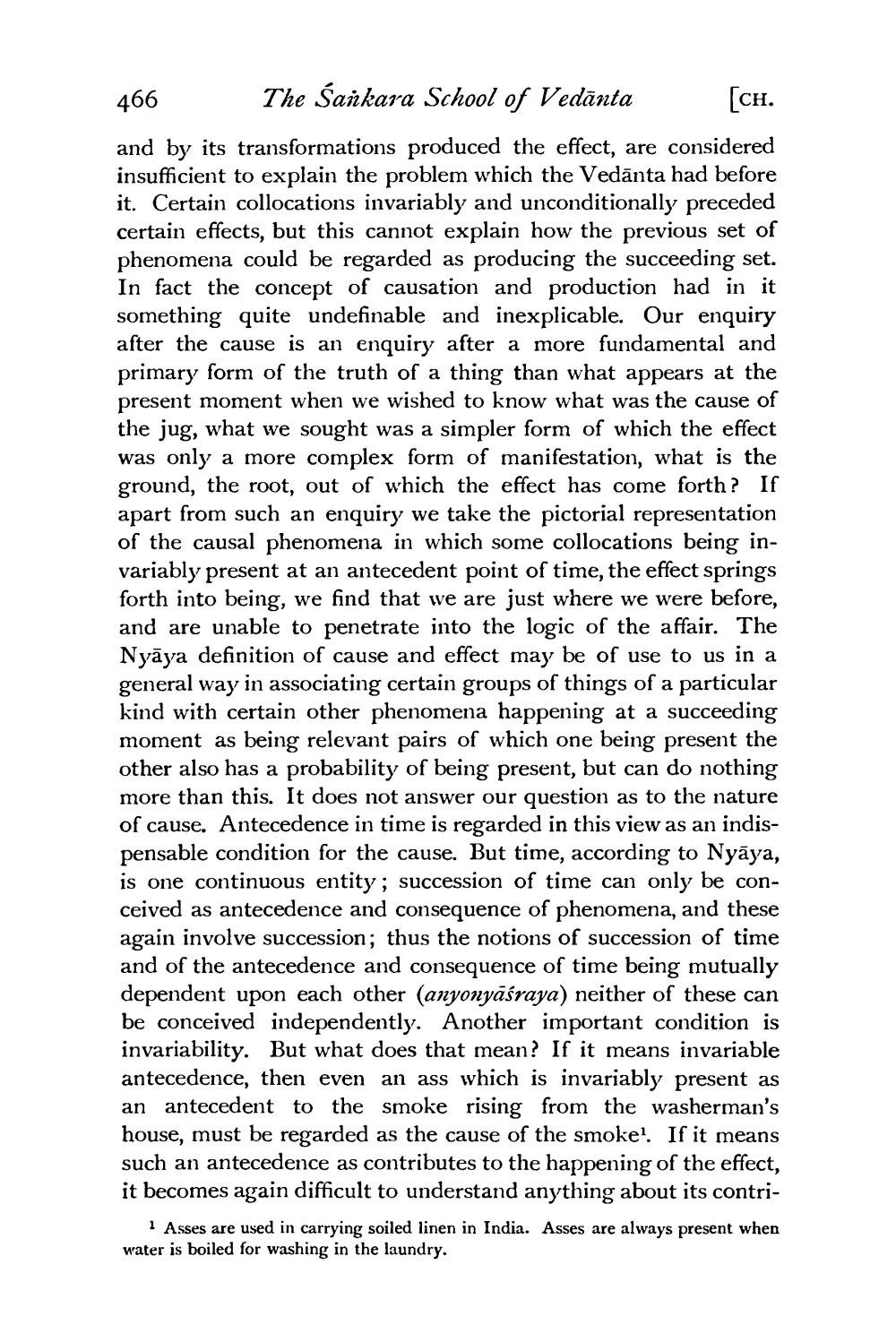________________
466
The Sankara School of Vedanta
[CH.
and by its transformations produced the effect, are considered insufficient to explain the problem which the Vedanta had before it. Certain collocations invariably and unconditionally preceded certain effects, but this cannot explain how the previous set of phenomena could be regarded as producing the succeeding set. In fact the concept of causation and production had in it something quite undefinable and inexplicable. Our enquiry after the cause is an enquiry after a more fundamental and primary form of the truth of a thing than what appears at the present moment when we wished to know what was the cause of the jug, what we sought was a simpler form of which the effect was only a more complex form of manifestation, what is the ground, the root, out of which the effect has come forth? If apart from such an enquiry we take the pictorial representation of the causal phenomena in which some collocations being invariably present at an antecedent point of time, the effect springs forth into being, we find that we are just where we were before, and are unable to penetrate into the logic of the affair. The Nyaya definition of cause and effect may be of use to us in a general way in associating certain groups of things of a particular kind with certain other phenomena happening at a succeeding moment as being relevant pairs of which one being present the other also has a probability of being present, but can do nothing more than this. It does not answer our question as to the nature of cause. Antecedence in time is regarded in this view as an indispensable condition for the cause. But time, according to Nyāya, is one continuous entity; succession of time can only be conceived as antecedence and consequence of phenomena, and these again involve succession; thus the notions of succession of time and of the antecedence and consequence of time being mutually dependent upon each other (anyonyaśraya) neither of these can be conceived independently. Another important condition is invariability. But what does that mean? If it means invariable antecedence, then even an ass which is invariably present as an antecedent to the smoke rising from the washerman's house, must be regarded as the cause of the smoke1. If it means such an antecedence as contributes to the happening of the effect, it becomes again difficult to understand anything about its contri
1 Asses are used in carrying soiled linen in India. Asses are always present when water is boiled for washing in the laundry.




